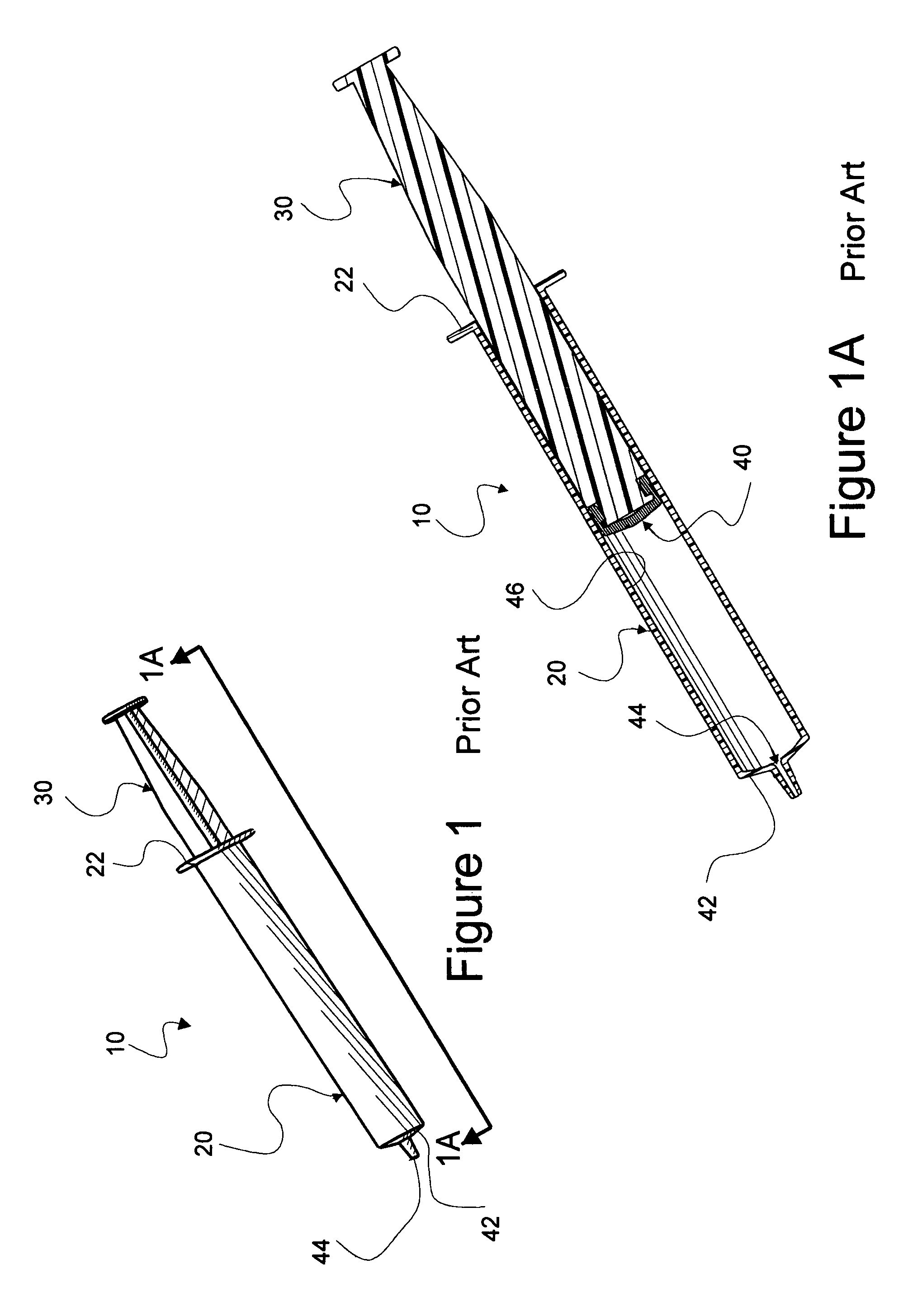Multi-chamber, sequential dose dispensing syringe
a syringe and multi-chamber technology, applied in the field of multi-chamber syringes, can solve the problems of increasing healthcare costs, shortage of nurses and pharmacists, and the cost of flushing syringes is added, not only in clinician time, but in terms of required additional syringes
- Summary
- Abstract
- Description
- Claims
- Application Information
AI Technical Summary
Benefits of technology
Problems solved by technology
Method used
Image
Examples
Embodiment Construction
[0063]In this description, the term proximal is used to indicate the segment of a device normally closest to a clinician using the device. The term distal refers to the opposite end. Primes of numbers are used to represent parts which are similar, but not identical to other parts having the same numbers. Reference is now made to embodiments illustrated in FIGS. 1–15 wherein like numerals are used to designate like parts throughout.
[0064]As used herein, the term “fluid” is defined to be a substance (either liquid or gas) which tends to flow or to take the shape of its container. The term “gas” is defined to be a fluid that expands indefinitely and which may be understood in most circumstances within the scope of this document to be consistent with air. The term “liquid” is a substance which is free flowing like water, but which is neither solid nor gaseous.
[0065]Prior art syringes (as exemplified by syringe 10) in FIGS. 1 and 1A, are available from a large number of commercial compan...
PUM
 Login to View More
Login to View More Abstract
Description
Claims
Application Information
 Login to View More
Login to View More - R&D
- Intellectual Property
- Life Sciences
- Materials
- Tech Scout
- Unparalleled Data Quality
- Higher Quality Content
- 60% Fewer Hallucinations
Browse by: Latest US Patents, China's latest patents, Technical Efficacy Thesaurus, Application Domain, Technology Topic, Popular Technical Reports.
© 2025 PatSnap. All rights reserved.Legal|Privacy policy|Modern Slavery Act Transparency Statement|Sitemap|About US| Contact US: help@patsnap.com



